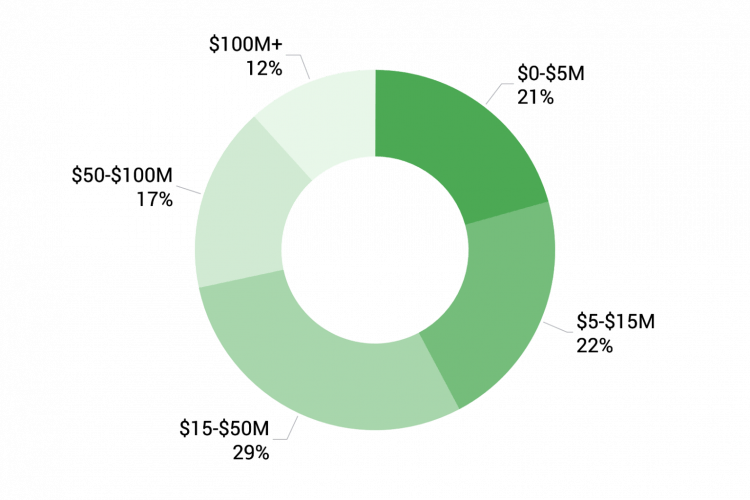Social Media Videos: Lessons Learned From 778 Nonprofits

We all know the feeling—we hit “post” on a new video and wait for the world to tell us what it thinks about our work. Your heart is racing. Your palms are sweating. You wait thirty seconds and hit refresh. Did anyone watch it yet? Hit refresh again. Did it get any shares, likes or comments?
However, once in a while, your video takes on a life of its own. Shares and comments start flooding in and you feel a rush of delight, pride, and excitement. You wonder how many new subscribers you’ll get or how much revenue it might drive to your nonprofit.
More often than not, though, a video doesn’t perform as well as we hoped, and we feel another familiar feeling—waves of disappointment and confusion as we wonder what went wrong.
Why do some videos perform so well while others hardly get any views?
Creating videos for nonprofits is both an art and a science. Although we spend the vast majority of our energy on the art of video making—scripting, filming, sound design and so forth–there’s also a science to video making that you can’t ignore.
Tectonic Video evaluated 778 nonprofit organizations across the social sector to create the Nonprofit Video Index™, a landmark study to establish benchmarks, identify trends, and uncover insights to help nonprofits create better videos. We captured video post data from each nonprofit’s Facebook, Instagram and Twitter account from January 1, 2019 through December 31, 2019 to create our data set, and then analyzed thousands of data points to identify actionable insights to help your nonprofit create better videos for social media.
Below, we’ll walk you through our results and share the science behind effective nonprofit videos, as well as show you how to apply them to your videos in the future.
Logging into your nonprofit’s social media account reveals dozens of metrics being measured in real-time like views, impressions, retention, and post reach. There are dozens of things you can measure, but what should you measure?
Of all metrics, the one that matters most is engagement. The reactions, shares and comments are more important than others because:
- You want to create videos that your followers watch, react to, comment on, and share. The more they interact with your videos the more likely they’ll care about your cause and love your mission. People share what they love with their friends, introducing your work to prospective supporters, volunteers and donors.
- Computer algorithms determine which videos are prioritized in users’ feeds. Although each social media channel’s algorithm is different, and their exact ranking factors are secret, they all say that their algorithms prioritize engagement over everything else. The more engaging your videos are, the more likely they will be seen by your followers who will share it with their friends and so on.
Measuring only for video views doesn’t control for audience size or post reach. For example, a bigger organization is more likely to get more views than a smaller one, simply because they have more followers.
Also, it’s quite easy (and inexpensive) to purchase as many video views as you want through advertising or other means. What counts as a view on social media is trivial: only 50% of your video must be visible for 2-3 seconds. When you use engagement as your primary metric, you focus on the quality of your content and if viewers are genuinely interested.
Engagement According to Facebook, Instagram, and Twitter
In 2018, Facebook decided to prioritize content that brings people together—“posts that spark conversations and meaningful interactions between people,” according to the original announcement. Today, Facebook continues to prioritize content that gets a lot of shares and comments.
Instagram’s algorithm works similarly. It relies on three major signals—relationship, interest, and timeliness. If your followers have interacted with your posts frequently in the past, they’ll be more likely to see your new posts. Topic matters too. If a user has engaged with videos like yours in the past, your video is more likely to appear on the top of their feed, especially if the video is performing well in general.
Twitter promotes content based on perceived interest as well. The top section of a user’s page features those tweets that the algorithm ranks as most relevant to them. Sometimes, that includes posts that have received likes and shares from accounts that a user follows. If your video does well, Twitter will show it to new people.
For your current followers, Twitter also has an “in case you missed it” section, which contains highly relevant posts from followed accounts. Posts in this section tend to come from accounts that the user interacts with frequently.
The more engagement your videos are getting from your followers, the more people will see your next video, and the more likely you’ll be to grow your audience. Which begs the question—how do you create engaging videos?
Free Download: The BIG Guide to Social Media for Nonprofits
Key Factors in Video Engagement
When we set out to create the Nonprofit Video Index™, one of our primary goals was to identify the most engaging videos by category of nonprofit, cause area, annual revenue and follower size. We also identified the Top 100 Most Engaging Nonprofit Videos Per Social Media Channel. By identifying and analyzing the most engaging videos, we could reverse engineer which factors correlate with success and which don’t. Here is what matters most:
Length
The most engaging social media videos are short. The majority of the Top 100 Most Engaging Nonprofit Videos Per Social Media Channel were under one minute—70% on Twitter, 54% on Facebook to be specific. But that doesn’t paint a full picture because 92% of the Top 100 on Facebook were less than 2 minutes, and on Twitter, 33% of the top 100 were even under 30 seconds.
Things are a bit different on Instagram, which limits video length to 60 seconds. So, 100% of the Top 100 on Instagram were less than a minute. As limiting as that may be, this can be a helpful constraint if you want to make the most engaging social media videos possible for your nonprofit. Just make your videos fit within the 60-second time limit for Instagram, and then cross-post that video to your other social media channels.
Content Type
Some topics get more play on social media than others. This has a lot to do with the emotions that the content of a video evokes.
Social sharing happens more often when a piece of content causes emotional arousal. The most viral videos inspire more “active” emotions like anger, fear, or amusement—emotions that make you want to get up and do something. Videos that inspire more passive emotional states, like contentment or sadness, tend to not do as well.
These findings are in line with what we learned from the Nonprofit Video Index. Among our Top 100 Most Engaging Videos Per Channel, the most successful topics were:
- Animals and children, especially baby animals or kids doing cute things
- Emotional reactions recorded in real-time such as celebrations or tears of joy
- Political or controversial topics
- Stories of lives transformed
- Topical/timely videos
These content types evoke emotions that increase your biological desire for “social transmission,” i.e. sharing. Get creative and think about how the work of your nonprofit can be told through these content types, and return to them regularly to increase engagement throughout the year.
Post Frequency
Nonprofits have been asking for years whether post frequency matters. It’s been a difficult question to answer because most studies on the topic have focused on for-profit videos and zeroed in on a relatively short time frame like weekly or monthly, which is an unreachable frequency for most nonprofits.
The Nonprofit Video Index™ provides much more usable data. It shows that nonprofits with more posts per year also have bigger audiences.
Average Video Posts Per Nonprofit by Audience Size

The numbers in this graph represent the number of videos posted per year on a certain channel. The difference is fairly sizable—on Instagram, where the gap is smallest, nonprofits with large audiences post twice as many videos per year.
What Doesn’t Matter
As important as identifying which factors correlate with engagement, we also uncovered which factors do not. Through our analysis, we found that production value and budget aren’t as important as some might think.
Production Value
Every nonprofit video maker dreams about what they could do with more resources. Fortunately, creating engaging social media videos doesn’t depend on production value.
Production value is an industry term that refers to how professionally made a video appears. Think high-quality video cameras, extensive lighting and sound equipment, sophisticated design, etc. Many assume that a high production value correlates with higher engagement, but when we analyzed the most engaging posts in the index, we found that the opposite was true.
The majority of the Top 100 Most Engaging Nonprofit Video Posts per Social Media Channel were made with “prosumer” cameras (smartphone cameras much of the time), no lighting or audio equipment, and minimal graphics. It turns out engagement isn’t about how flashy your video is. It’s about the story you tell.
Budget
We thought that maybe an organization’s annual budget would help them get bigger audiences, but that also turned out not to be true. There was a relatively even distribution of large audiences across all budget categories. In fact, according to the data, a nonprofit with a budget under $5 million is more likely to have a large audience than one with a budget of more than $100 million.
Breakdown of Nonprofits in Index with Large Audiences

Our research shows that you don’t need a big budget or high-end equipment to make successful videos for social media. You do, however, need the commitment to make highly engaging videos regularly.
Putting It All Together
After spending a year collecting and analyzing the video post data of 778 nonprofit organizations, we’ve shed light on the science behind effective social media videos. We’ve clarified what nonprofits should measure and why, which factors correlate with engagement and which factors don’t. These insights, along with benchmarking, audience analysis and video testing form the building blocks of a data-informed strategy to create better videos for nonprofits.
The world needs what you do, now more than ever. Go forth and make great videos!
Doug Scott is the founder of Tectonic Video, a leading video agency for nonprofits. He and his team work with nonprofits across the U.S. and around the world to create award-winning videos that drive results. His work has been featured in The New York Times, NPR, CNN and AdWeek and he is a guest lecturer at Stanford University on the power of storytelling for nonprofit organizations.

The BIG Guide to Social Media for Nonprofits



